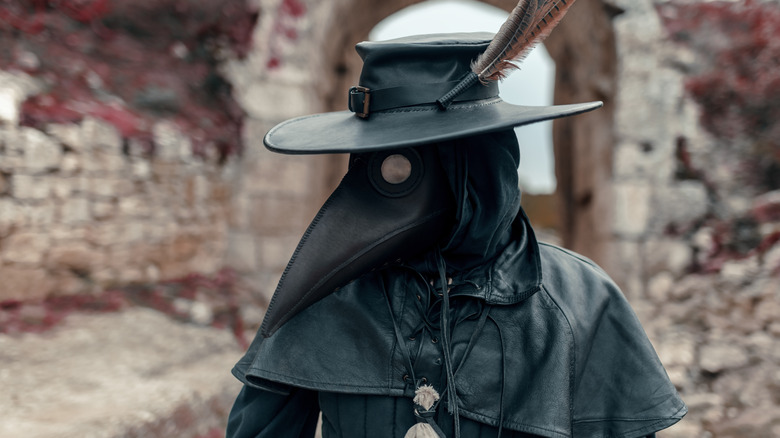How Did The Black Death Actually Start?
The Black Death peaked in Europe between 1347 and 1351, killing around two-thirds of the population — an estimated 25 million people (per Britannica). For centuries after that, the plague would make reappearances, causing outbreaks and devastating mortality every time.
According to 14th-century scholars at the University of Paris and as noted by History, the Black Death was created by Saturn, Jupiter, and Mars lining up on March 20th, 1345. Astrology was an important part of medicine and a respected science during the Middle Ages. In fact, medieval astrologers believed that heavenly bodies had a direct impact on illness, human fortunes, and disease epidemics (per Encyclopedia).
Scientists now know that the plague was caused by the bacterium Yersinia pestis (per History). For many years, rats were blamed for the spread of the plague, but the disease is actually carried and transmitted by infected fleas that live on rats and other mammals, including mice, chipmunks, and squirrels. In Medieval urban settings, however, rats were the most likely carrier of the infected fleas — and when a rat died, the fleas would jump to a nearby host, which in many cases just happened to be human, according to National Geographic.
Where exactly the plague started is still up for debate
According to History, the plague could have started in Mongolia as early as 1320 and run its course by killing nomadic tribes throughout the country before moving into China. Climate change could have played a part in the initial spread of the Black Death, as, according to Earth, rodents began to flee towards more populated areas and away from Asia's barren grasslands.
From there, the plague likely continued moving west towards Europe via the silk trade routes (per CNN). Once in Europe, the Black Death stroke in port cities first and it may have all started when the forces of Kipchak khan Janibeg attacked Kaffa, a Crimean trading port on the Black Sea (via Britannica).
According to Britannica, as the army was being decimated by the plague, Janibeg started launching plague-infested corpses into the city, hoping the infection would weaken the enemy. It seemed to have worked, as trading ships started carrying the infection from there into Italy and other Mediterranean ports soon after.
Once in Europe, the plague spread fast
The Black Death seems to have arrived at the Sicilian port of Messina in October 1347 aboard 12 ships coming from the Black Sea (via History). From there, it quickly spread to France and North Africa. Once the infection reached Florence, the epicenter of a complex system of trade routes, it had become unstoppable. According to National Geographic, the Black Death spread at a speed of more than a mile per day, devastating towns and forever changing the economic and social makeup of the continent.
Part of the reason this happened was that Europe was the "perfect" place for the plague to explode. Medieval cities didn't have a sanitation system in place, which meant garbage was thrown in the streets, attracting rats. So when rats carrying infected fleas made their way into town, the plague found a perfect breeding ground. Even worse, the Black Death could be transmitted from person to person through the air via coughing, killing people living under the same roof within days (per National Geographic).


